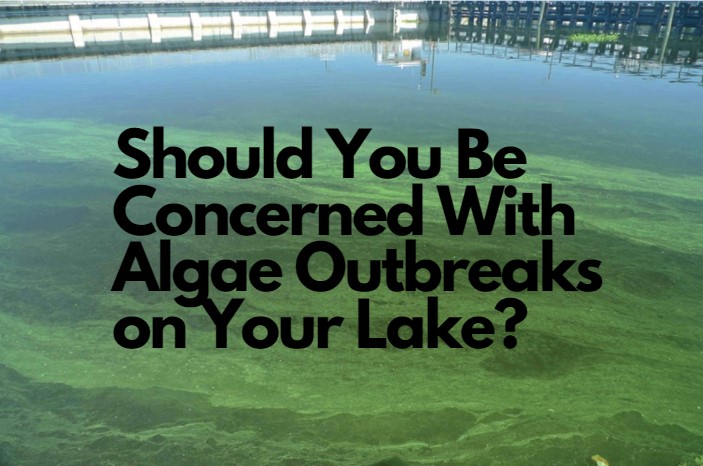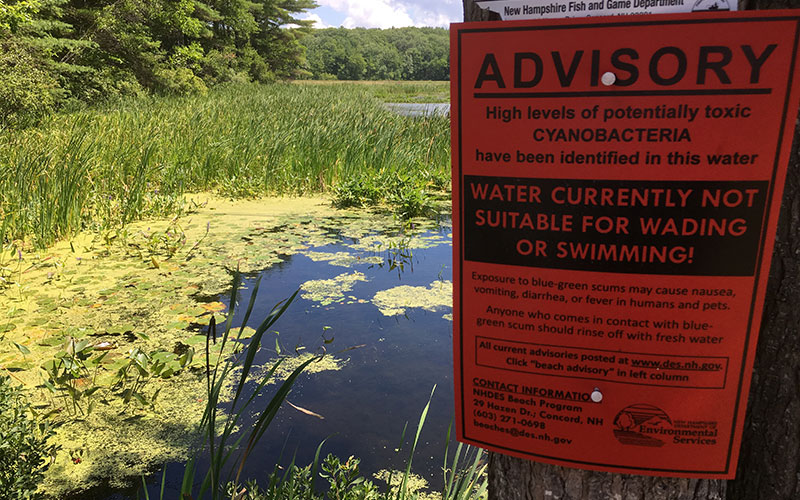
The end of summer marks the unofficial end of the peak algae bloom seasons. Although warmer states like California and Florida experience outbreaks all year long, most of the country’s outbreaks stop when the weather turns cold.
What is an algae outbreak?
Blue-green algae outbreaks occur when excess nutrients make their way into water ecosystems. These nutrients include nitrogen and phosphorus from fertilizer and animal manure from farms that make their way into fresh bodies of water. The nutrients are food for the microscopic organism called Cyanobacteria that are normally present in freshwater ecosystems. When you have excess nutrients paired with other factors such as stagnant water and warm weather, the Cyanobacteria proliferate.

What does an outbreak look like?
There are many different ways an algae outbreak presents itself at your lakefront property. An algal bloom can look like foam, scum, mats, or paint floating on the surface of water. Some blooms are not visible at the water surface. Water bodies with an ongoing bloom may look blue, green, brown, yellow, orange, or red.
How are algae outbreaks harmful?
Water affected by blue-green algae outbreaks is not suitable for drinking, recreation, or agriculture.
Some species of algae produce harmful toxins which take effect when eaten, inhaled, or skin contact is made. Contact with affected water can cause skin irritation, mild respiratory effects and hay fever-like symptoms. Ingesting toxins can also cause gastroenteritis symptoms, such as vomiting, diarrhea, fever and headaches. Toxins can also have an effect on the liver and the nervous system. Pets and other animals can be poisoned and killed by toxic algae.
Harmful algal blooms sometimes create toxins that are detrimental to fish. It can create a dead zone where aquatic life is unable to be present. At first, algae is consumed by small fish and shellfish. These toxins then move their way up the food chain and can impact larger freshwater fish. Even if the algae is non-toxic, it can negatively impact aquatic life by blocking out sunlight and clogging fish gills.
Not only can algal outbreaks cause harm to human and animal health, it can also come with great external costs. An outbreak can raise the price of drinking water because of the necessary added cost to clean the water. It can also hurt industries such as farming and other businesses that depend on clean water. An algal outbreak can also harm water recreation and even bring down property values!

2020 Outbreak Cases:
Harmful algae blooms are a major environmental problem in all 50 states. As of October, there have been 409 cases of algae outbreaks this year alone. This is a decline from 516 reports from this time in 2019.
The lower number of reported outbreaks in 2020 does not necessarily mean there have been less outbreaks. The ongoing pandemic has forced many states, such as Utah and Kansas, to reduce algae testing due to budget constraints. For states like Maine, Minnesota, and Wisconsin, which are home to tens of thousands of freshwater bodies, funding constraints could have severe impacts on efforts to prevent exposure to algae.

The federal government could be preventing the kind of excess nutrient runoff that contributes to algal outbreaks by enforcing the clean water act, but it isn’t, so states are forced to bear the costly burden of testing, researching, responding, monitoring, and mitigating freshwater outbreaks. Climate change will increase the frequency and duration of algal events nationwide so the reactive approach to freshwater outbreak response will only increase states’ future costs.
Posted by Scott Freerksen “The Lake Guy”
